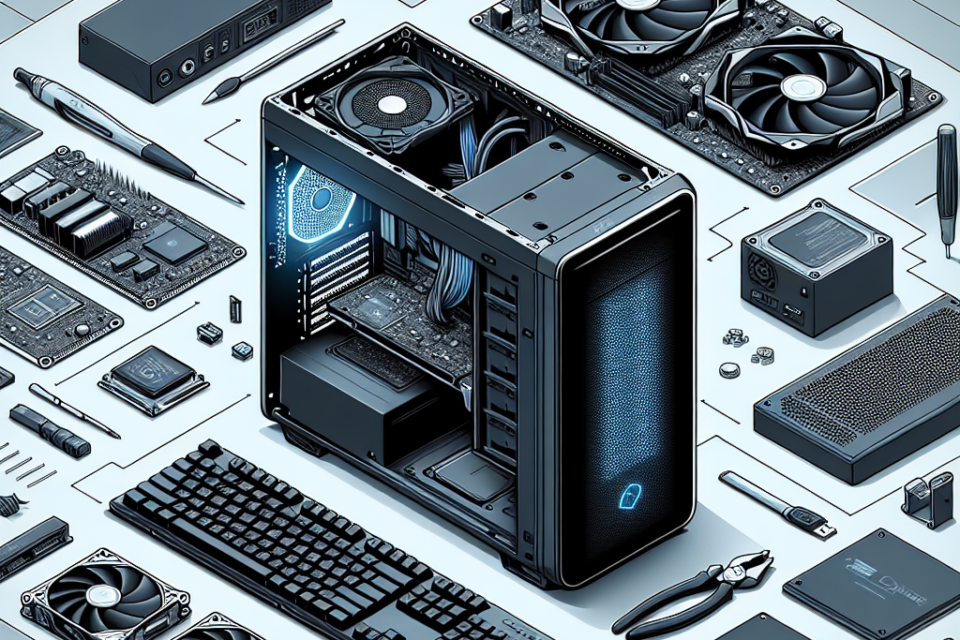How to Build Your Own Gaming PC: A Step-by-Step Guide

Planning Your Build
Before you start building your gaming PC, it is crucial to plan ahead. This includes setting a budget, selecting compatible components, and understanding the assembly process. A well-planned build minimizes the risk of encountering issues and ensures that all parts work harmoniously together.
Setting a Budget
The first step is to determine how much you are willing to spend. Gaming PC builds can range from a few hundred to several thousand dollars, depending on the hardware you choose. Sticking to a budget will help you prioritize your purchases and avoid overspending on unnecessary components.
Choosing Components
Choosing the right parts is essential for building a powerful gaming PC. The key components include:
- CPU: The Central Processing Unit (CPU) is the brain of your computer. For gaming, you’ll need a strong processor, ideally one from Intel or AMD.
- GPU: The Graphics Processing Unit (GPU) is responsible for rendering images and videos. It is one of the most critical components for gaming. High-performance GPUs like NVIDIA’s RTX series are recommended.
- RAM: Memory is vital for game performance. A minimum of 16GB of RAM is recommended for most modern games.
- Storage: Opt for an SSD for faster load times and a better overall experience. You can also include an HDD for additional storage.
- Motherboard: Ensure that your motherboard is compatible with your selected CPU and has enough slots for your other components.
- Power Supply Unit (PSU): A reliable PSU is critical for the stability and safety of your build. Make sure it has enough wattage to support your setup.
- Case: Choose a case that fits your components and has good airflow to keep your system cool.
Assembling Your PC
Preparing the Workspace
Set up a clean, static-free workspace. Ensure you have all the necessary tools, including screwdrivers and thermal paste. Organize your components and read through the manuals to understand the installation process.
Installing the CPU
Start by installing the CPU onto the motherboard. Open the CPU socket and align the processor with the socket, making sure it fits correctly. Gently lower the CPU into place and secure it with the locking mechanism.
Attaching the CPU Cooler
Apply a small amount of thermal paste to the CPU. Attach the CPU cooler by following the manufacturer’s instructions. Make sure it is firmly in place to ensure efficient heat dissipation.
Installing Memory (RAM)
Insert the RAM modules into the corresponding slots on the motherboard. Apply even pressure until you hear a click, indicating that the RAM is securely installed.
Mounting the Motherboard
Place the motherboard inside the case. Align it with the standoffs and secure it with screws. Ensure that all ports and connectors are accessible.
Installing the GPU
Locate the PCIe slot on your motherboard and remove any necessary slot covers from the case. Insert the GPU, ensuring it clicks into place, and secure it with screws.
Connecting Storage Drives
Mount your SSD or HDD in the designated bays within the case. Connect the storage drives to the motherboard using SATA cables and power them through the PSU.
Power Supply Installation
Install the PSU in its designated area, typically at the bottom or top of the case. Secure it with screws and connect the power cables to the motherboard, GPU, and storage drives.
Connecting Case Fans
Install any additional case fans to improve airflow. Connect these fans to the motherboard or PSU, depending on the type of connectors available.
Finalizing Your Build
Cable Management
Organize your cables to ensure they do not obstruct airflow or make maintenance difficult. Use zip ties or Velcro straps to bundle and secure cables.
Powering On
Double-check all connections and components. Once everything is in place, plug in your power cord and turn on your PC. Enter the BIOS to verify that all components are recognized and functioning properly.
Installing the Operating System
Using a bootable USB drive, install your chosen operating system, such as Windows 10 or 11. Follow the on-screen instructions to complete the installation.
Installing Drivers and Updates
Once the OS is installed, update your system by installing the latest drivers for your hardware. Check for any available updates to ensure optimal performance and security.
Installing Games and Software
With everything set up, you can now install your favorite games and necessary software. Customize your settings to enhance your gaming experience.
Maintenance Tips
Regular maintenance is crucial to keep your gaming PC running smoothly. Clean the interior periodically to remove dust and debris. Check for software updates and monitor temperatures to prevent overheating. By following these tips, your gaming PC will provide a high-performance experience for years to come.
